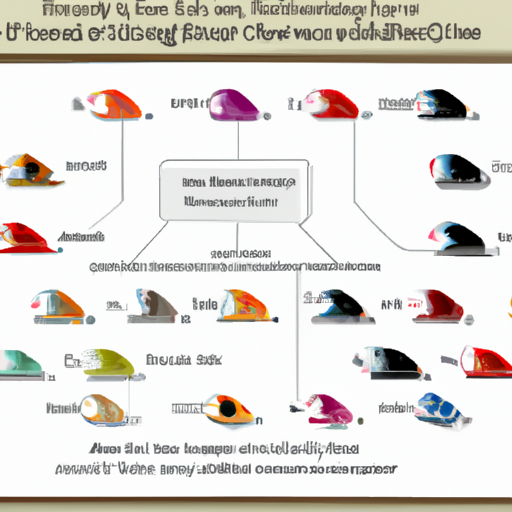Introduction
You might have noticed how fascinating it is to see a litter of puppies from the same parents displaying a wide range of coat colors. Ever wondered why? It’s all down to the magical world of genetics!
Understanding the Basics
Before we delve into the specifics, let’s first make sure you understand the basics.
Genetics is the study of how characteristics are passed from parents to offspring. Coat color in dogs is a classic example of this. It’s determined by genes, which are sections of DNA that code for specific traits. Each gene has two or more variations, known as alleles, that can lead to different outcomes.
To make it simpler:
- Gene: A segment of DNA that determines a specific trait.
- Allele: A version of a gene.
The Role of Dominant and Recessive Genes
Here’s where it gets interesting. Not all alleles are created equal. Some are dominant, meaning they’ll always show up if present, and others are recessive, only showing up if there are two copies.
For example, the gene for black fur color in dogs (B) is dominant, while the gene for brown fur color (b) is recessive.
This can be represented in a table:
| Parent 1 | Parent 2 | Possible Offspring |
|---|---|---|
| B | B | Black (BB) |
| B | b | Black (Bb) |
| b | B | Black (Bb) |
| b | b | Brown (bb) |
The Magic of Multiple Genes
When it comes to coat color, there are multiple genes at play. This is known as polygenic inheritance. Each gene can add or subtract from the color, resulting in a wide variety of possible outcomes.
You can think of it like mixing paint. If one gene adds a bit of black and another adds a bit of brown, you can end up with a whole range of colors in the puppies!
The Role of Environment
While genetics play a huge part, the environment can also have an impact. Factors such as diet, temperature, and even sunlight can influence the color of a dog’s coat.
Frequently Asked Questions
Q: Can two brown dogs have a black puppy?
A: Yes, if they both carry the recessive allele for black color.
Q: Why does my puppy’s fur color change as they grow?
A: This can be due to environmental factors or genes that only activate at a certain age.
Q: Can two black dogs have a brown puppy?
A: Only if both parents carry the recessive allele for brown color.
Q: Are certain fur colors linked to health issues?
A: Certain breeds with specific colors can be prone to health issues, but it’s not the color itself causing the problem.
Remember, every dog is unique and that’s what makes them special. Whether they’re black, brown, or any color in between, they all deserve love and care. Happy dog parenting!



